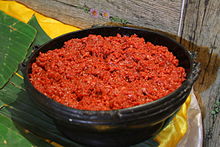Parents! Quick! Learn How To Get Your Child Eating Healthy!

So, what is your child’s reaction going to be to eating healthy? “I don’t like fruit and veggies; I want a cheeseburger, fries and a candy bar.”
• Don’t panic it… Give it time. Food preferences are slow to change, but they do change over time. Making a new behavior a habit usually takes 3 months or more. I am going through this pain currently as we speak, but it’s getting easier to eat and like healthy foods.
• Take it slow. Your child doesn’t have to give up their favorite foods completely. For instance, cut out 50% of (1) of your child’s unhealthy habits, such as sugary drinks and replace with water or low-fat milk; two weeks later, choose another unhealthy habit to cut down 50%, such as unhealthy snack and replace with fruits, veggies or nuts; 2 weeks later, do the same thing, again and again. Make your changes small, and give your child time to adjust.
• Eat together as a family as often as possible and keep family meals pleasant and positive. Avoid making comments about the amount or type of food your child eats. Pressure to eat actually reduces children’s acceptance of new or different foods.
• Make healthy food choices for your family’s meals, and occasionally, ask your child what healthy meal they want.
• Make meal times fairly predictable. Eat at around the same times every day and always at the table, even for snacks. If dinner needs to be early to avoid the pre-dinner snacking, then do it!
• If your child does need a snack, make sure to have plenty of healthy snack foods on hand, such as fresh and dried fruit, raw vegetables, fat-free or low fat yogurt, fat-free or low fat cottage cheese, whole grain crackers, air-popped popcorn, nuts, seeds, cold chicken and fish, and slices of lean cooked cold meat. Let your child decide which snack they want. Keep in mind to limit the snack before their meal, as you want them hungry… it easier to get them to eat something they don’t like a lot when their hungry!
• Drink water or low-fat milk instead of sugary and high calories drinks. Examples include carbonated sodas, juices sweetened with sugar, iced teas, flavored milk, flavored sweetened waters, sweetened hot beverages such as hot chocolate, energy drinks, and sports drinks. Even watch-out for fruit and vegetable juices; when taken in excess, the juice contributes to a higher calorie intake. If you choose to include fruit and/or vegetable juice in your child’s diet, do so in moderation and try to squeeze the fruit for juices yourself!








